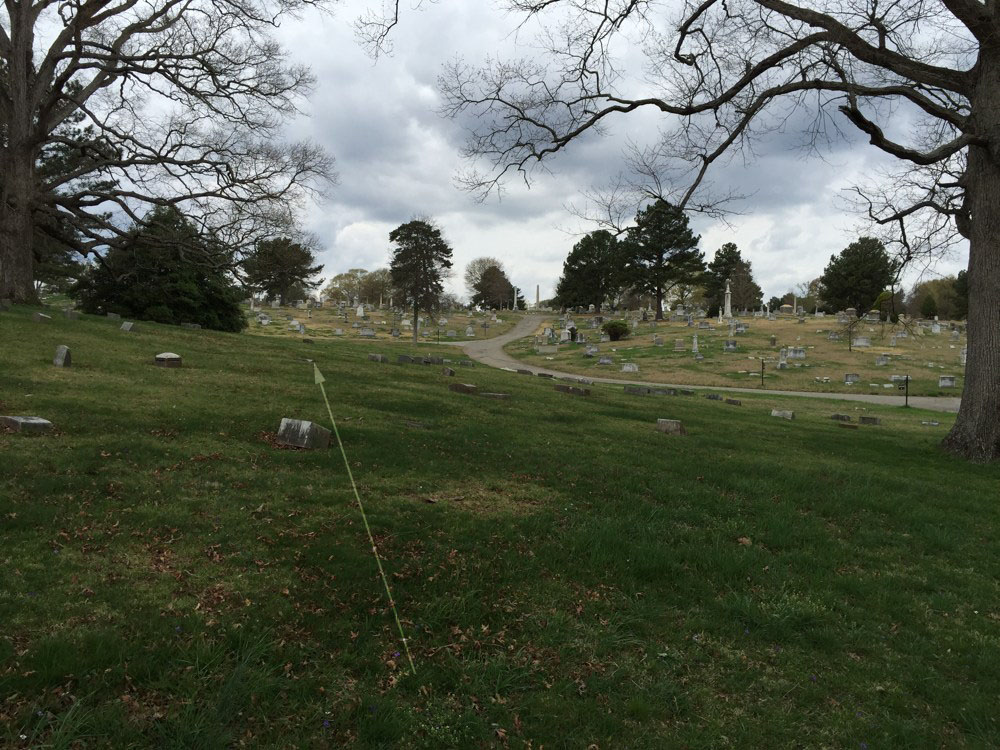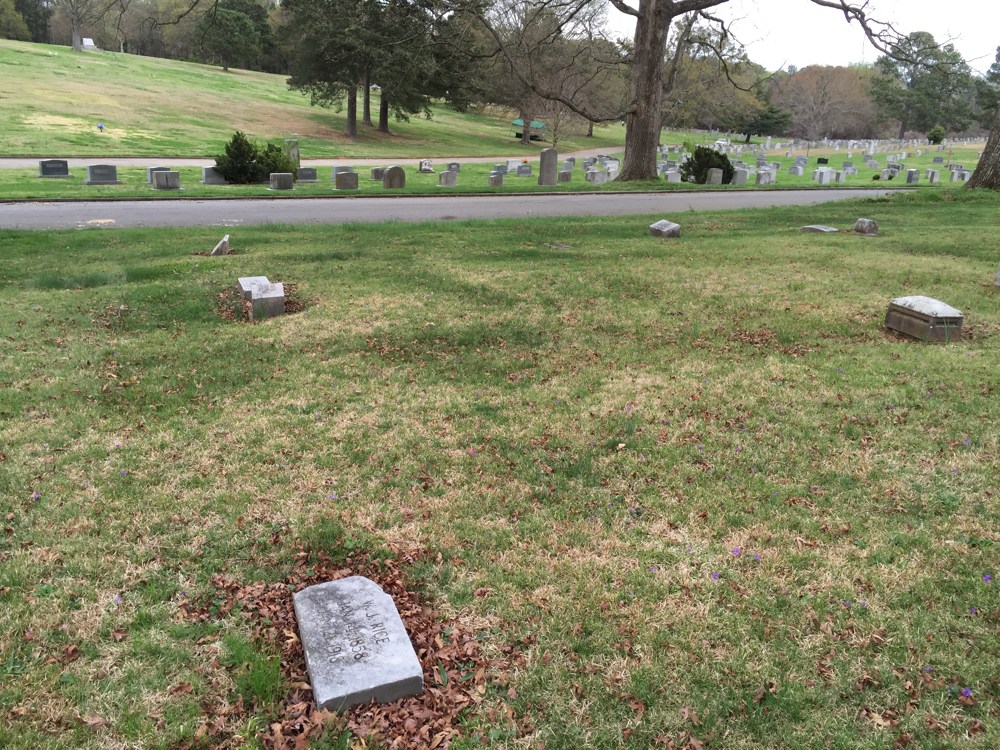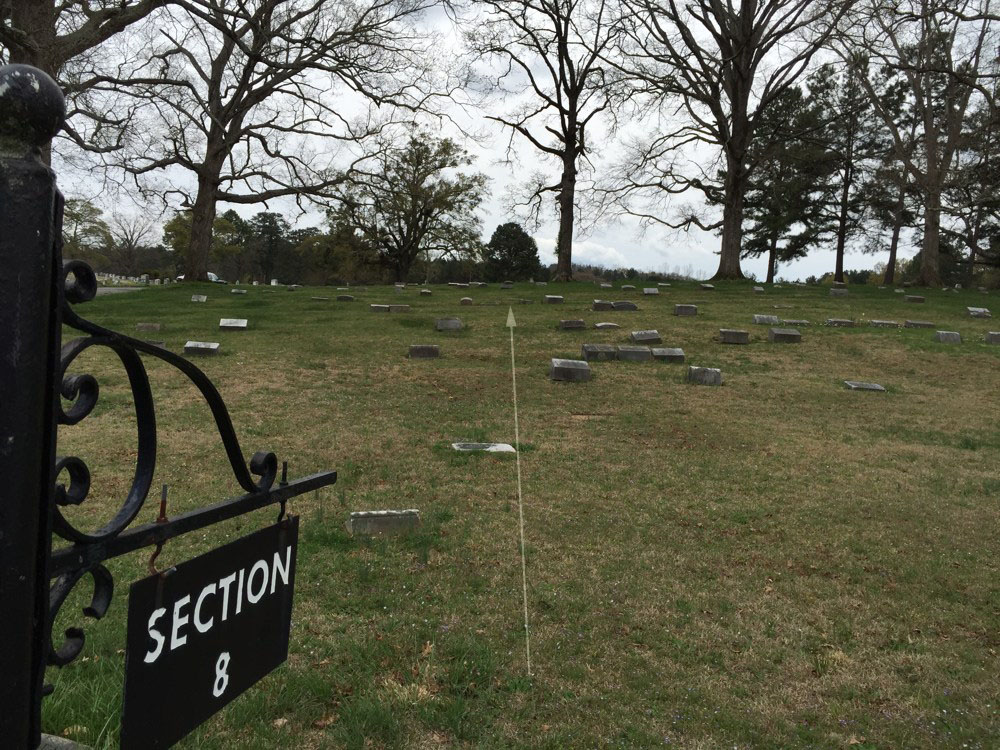William Jasper Rice
1856-1918

Ligon Portraiture Picture
![]()
Brother W. J. Rice is Dead
I received a telegram from Brother Clarence Teurman stating that Brother W. J. Rice fell dead in Atlanta, Georgia, Monday, January 21. This closes another long, active life. When I was a mere boy, I read with interest the writings of Brother W. J. Rice. Some twenty or thirty years ago he began the publication of the "Gospel Echo" at Palestine, West Virginia. From there he went to Covington, Indiana, where Brother A. Ellmore became associated with him and for several years they labored jointly in publication of the Echo. Later Brother Rice founded the "The Missionary," moved to Cleo, Oklahoma, then to Corpus Christi, Texas, where The Missionary was discontinued and the Apostolic Way was established. Brother Rice moved to Atlanta, Georgia, some two years ago, turning the Apostolic Way over to Brother Clarence Teurman, who still publishes the paper at Union City, Georgia. Brother Rice was a close Bible student and though he held some views at variance with what is generally accepted among the disciples of Christ he was regarded as one of its strongest and most earnest members. He has written much for publication and his writings are usually clear and forceful. We extend sympathies to his bereaved family.
---G.H.P.S. Firm Foundation, 20 January 1918, page 2.
![]()
The Life and Work Of W.J. Rice
William Jasper Rice was born Paintsville, Johnson County, Kentucky on 14 January 1858. He preached for a time in Kentucky and moved to Covington, Indiana. He produced a paper there called the Gospel Echo. Alfred Ellmore co-edited the paper with him for a time. Later, William moved to Cleo, Oklahoma and started a paper there called The Missionary. He discontinued the paper when he moved to Corpus Christi, Texas. While in south Texas he produced a paper called the Apostolic Way. When moving to Atlanta, Georgia in 1916, he turned the paper over to Clarence Teurman who published the paper in Union City, Georgia. He passed from this life suddenly on 21 January 1918, just seven days past his 60th birthday. He was buried in Westview Cemetery.
C.D. Moore wrote of him,
“Brother Rice was a clear writer, making himself understood quite well as a general rule. He was a close and careful Bible student, and very conscientious. In later years he and I did not agree on some matters pertaining to the worship, etc., and what plain ???? letters he has written to me. I never took the least bit of offenses at him for his “scolding” me, for I knew he was always trying to do me good, and not harm, and this I wrote to him at different times. In two different things about which he “scolded” me and later discovered that my course was right, and he manfully complimented me, and asked my pardon. He was really a strangely strong man in the Word, and I always thought, a truly good man, and I mourn his sudden departure as I wanted to see him once more on this side of the river of death. But, alas! It is too late now. May we meet “over there.” Farewell, dear Brother Rice.
“Sister Rice (Ella, if I remember right), you and the family have my deepest sympathy in this, your bereavement. I have not forgotten your kindly word and manner, and how industriously you worked at seeing and millinery, etc., to help support the Lord’s cause when you seemed hardly able to keep on your feet. Continue to love and obey the Lord, our only hope and Savior, and some day you all will step across to “Papa Willie,” through Jesus Christ his Redeemer and ours.” C.D. Moore,
—Firm Foundation, February 26, 1918, page 6.
![]()
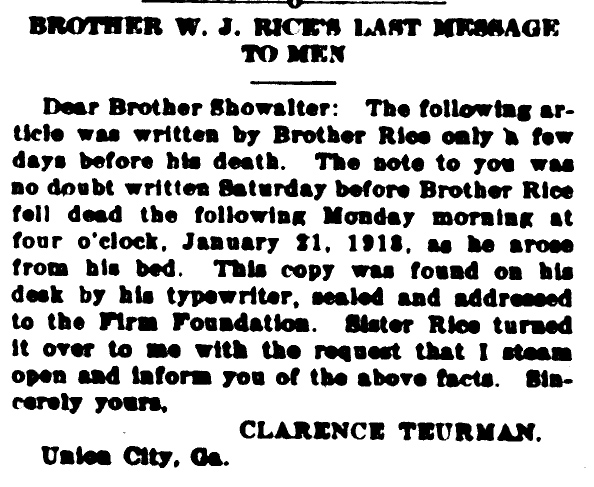
BROTHER W.J. RICE’S LAST MESSAGE TO MEN
Dear Brother Showalter: The following article was written by Brother Rice only a few days before his death. The note to you was no doubt written Saturday before Brother Rice fell dead the following Monday morning at four o’clock, January 21, 1913, as he arose from his bed. This copy was found on his desk by his typewriter, sealed and addressed to the Firm Foundation. Sister Rice turned it over to me with the request that I steam open and inform you of the above facts. Sincerely yours,
Clarence Teurman, Union City, Ga.
A Rejected Article.
Dear Brother Showalter: I submit herewith an article submitted to one of our daily papers, in reply to the infidelity of a Methodist preacher, which the editor of that paper rejected and returned, thereby becoming equally guilty of so great a sin. But what is it that these sectarian preachers and editors of the same stripe will not do along that line? Brother Showalter, I wish you would send the M. E. preacher a copy of your paper containing the above article; also send me one.
Publisher Sunday American.
Dear sir: I notice in your paper for Sunday, the 6th of January, that the “Rev.” Dr. W. C. Endless, D. D., a prominent Methodist minister of Cleveland, Ohio, in his article concerning the possible discoveries at Jerusalem, now that the city is in the hands of civilization, says:
“It is possible that the very body of the Savior himself may be discovered. There is considerable doubt as to whether the ancient Jews embalmed the bodies of their dead, but there are authorities who contend that they did so preserve the bodies of the greatest men. If the Savior’s body was embalmed it will be found in the lost tomb. Where this is now is a mystery. It is not believed by many modern scholars that it is underneath the Church of the Holy Sepulchre, where for so many years it was thought to be. It may be under the Rock of Omar, the site of the Temple. Only exploration will determine this, but it is certain that the Savior was buried under the then city of Jerusalem, in the tomb of Joseph of Arimathea, and this will be identified by its inscription.”
If it is “certain” that the body of our Savior was buried in the tomb of Joseph of Arimathea, it is thus certain because God’s word says so. I believe with all my heart that it was under the divine testimony: “And when even was come, there came a rich man from Arimathea, named Joseph, who also himself was Jesus’ disciple; this man went to Pilate and asked for the body of Jesus. Then Pilate commanded it to be given up. And Joseph took the body and wrapped it in a clean linen cloth, and laid it in his own new tomb; . . . and he rolled a great stone to the door of the tomb and departed” (Matt. 27: 57-60).
This settles the question as to whether the body was buried in Joseph’s tomb, and it also settles the question as to the manner of the preparation of the body—it was not embalmed, there being no testimony to that effect; but was simply wrapped in linen cloth, which was left in the tomb after Jesus arose. “When Simon Peter entered into the tomb, he beholdeth the linen cloths lying, and the napkin that was upon his head” (Jno. 20:6,7).
Now, let us settle another and very important question. The gentleman says that it is possible that the very body of the Savior himself may be found. How could that be? If from the divine testimony we believe that it is “certain” that the body was buried in Joseph’s tomb, from the same testimony we must believe to a “certainty” that the body of Jesus was in that tomb till the first day of the week following, and then came forth, “and that he appeared unto Cephas, then to the twelve, then he appeared to about five hundred brethren at once” (1 Cor. 15:5,6).
Luke says, “And the women, who had come with him out of Galilee . . . on the first day of the week at early dawn, came unto the tomb, bringing the spices which they had prepared. And they found the stone rolled away from the tomb. And they entered in, and found not the body of the Lord Jesus. And it came to pass, while they were perplexed thereabout, behold two men stood by them in dazzling apparel: and as they were affrighted and bowed down their faces to the earth, they said unto them, Why seek ye the living among the dead? He is not here, but is risen” (Luke 24:1-6).
It is needless to add testimony as to the fact that Jesus’ body was wrapped in linen cloth, buried in Josephs’ tomb, and after three days came forth from the tomb. To accept one point is to accept all; and to disbelieve one fact is to disbelieve all; yet we had disbelievers in the days of the apostles, and have had ever since; men who claimed to be followers of Christ, and preachers of the gospel, who, like “the distinguished Bible scholar and prominent Methodist minister of Cleveland, Ohio,” disbelieved these fundamental truths. I say fundamental, because an inspired apostle has gone to record on this very point. He says, “Now, if Christ be preached that he had been raised from the dead, how say some among you that there is no resurrection of the dead? But if there is no resurrection of the dead, neither hath Christ been raised: and if Christ hath not bee raised, then is our preaching vain. Yea, and we are found false witnesses of God. . . . and if Christ hath not been raised, your faith is vain; ye are yet in your sins” (1 Cor. 15:12-17).
The whole structure of the Christian faith stands or falls with the resurrection of Christ. If I doubted for moment that Jesus was raised from the dead I wold lay down my Bible, give up the struggle for apostolic Christianity, and never preach another sermon. But I am a believer. Paul says, “Now I make known unto you, brethren, the gospel which I preached unto you, which also ye received, wherein also ye stand, by which also ye are saved, if you hold fast the word which I preached unto you, except ye believed in vain. For I preached unto you first of all that which also I received: that Christ died for our sins according to the Scriptures; and that he was buried; and that he hath been raised again the third day according to the Scriptures.”
Thus the apostle makes the belief of the fact that the Savior rose, a part of the gospel, to be believed; and when Jesus gave the last and great commission he said, “Go ye into all the world and preach the gospel to every creature; he that believeth and is baptized shall be saved; but he that believeth not shall be dammed.”
It is to be hoped that there are few who disbelieve in the resurrection of Jesus. the apostle says, “It is a fearful thing to fall into the hands of the living God,” for there we must be judged according to our works. Jesus stated a fundamental principle when he said, “He that is not for me is against me; and he that gathereth not with me scattereth abroad.” There is no neutral ground upon which to stand. We must accept Christ with all that the term means, and follow him according to the truths of divine revelation, or we are going to be lost, and to the extent of our influence, if believing and teaching that which is untrue, others are going to be lost on our account. We wonder, then, it is a fearful thing to fall into the hands of the living God. Sincerely,
ELD. W. J. Rice.
114 E. Fair, Atlanta.
Brother Rice has been known as an earnest, prayerful student of the word of God for many years. He was taken from us suddenly. The above strong, clear, forceful production evinces an abiding faith is the word of God. I give it to our readers with the explanation above, feeling that it is well worth the space, that it is such a defense of the truth as should merit a careful perusal, and that our lamented brother though dead, may yet speak. -G.H.P.S.
-Firm Foundation, 15 March 1918, page 2.
![]()
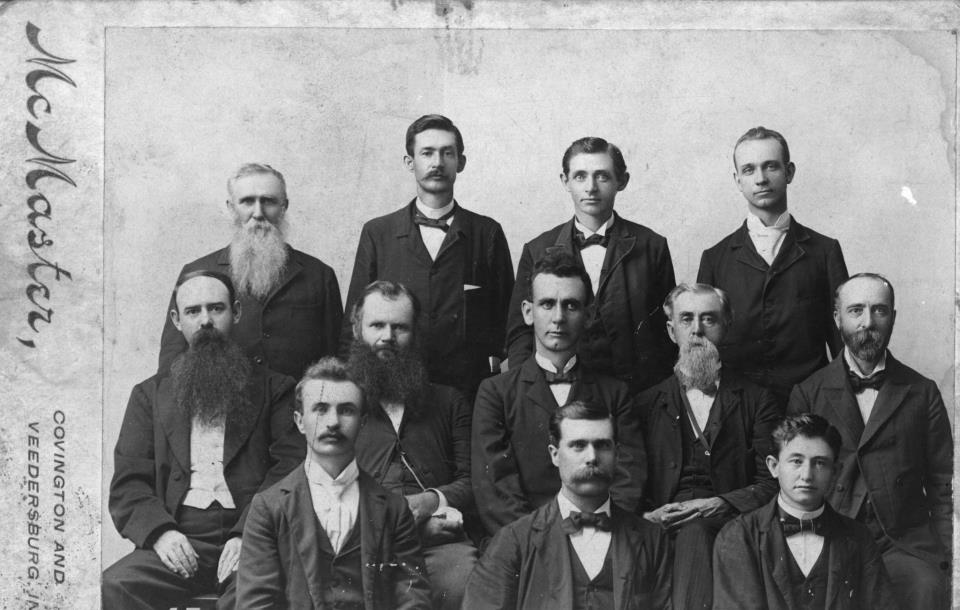
Photo courtesy of Terry Gardner
Bible Study Groups of Yesteryear
Circa 1900--Bible Teachers and Preachers in Indiana
Front Row L-R: Elmer Russell; C. T. Cook; Bert Ellmore
Mid Row: A. M. Morris; Andrew Perry; T. S. Hutson; A. Ellmore; W. J. Rice
Back Row: Will W. D. Taylor; W. J. Brown; Harry Walston; Fred Sommer.
Group photos of Bible Reading, Special or Annual Bible Study, Debate, Bible Class or Vacation Bible School
By: Dwain Stoops
-Source: Find-A-Grave
![]()
Directions To The Grave of W.J. Rice
W.J. Rice is buried in Westview Cemetery in Fulton County, Atlanta, Georgia. He is buried in Section 8, Row 37, Lot 12. Enter the main entrance and continue straight ahead on the white center line road. Follow white center line road until you come to hard left. Go to end of Section 3 and turn left. Section 9 will be on right. Stay to right until arriving at Section 8 sign. Stop and sign and walk in about 37 rows. Rice has a marker and it sits by itself behind a row with five markers in a row. This is unique as the whole section has few markers. It is the exception to find five in a row. Rice will be right behind this little cluster of graves. See GPS below for assistance.
GPS Location
33.74439167,-84.449745
![]()
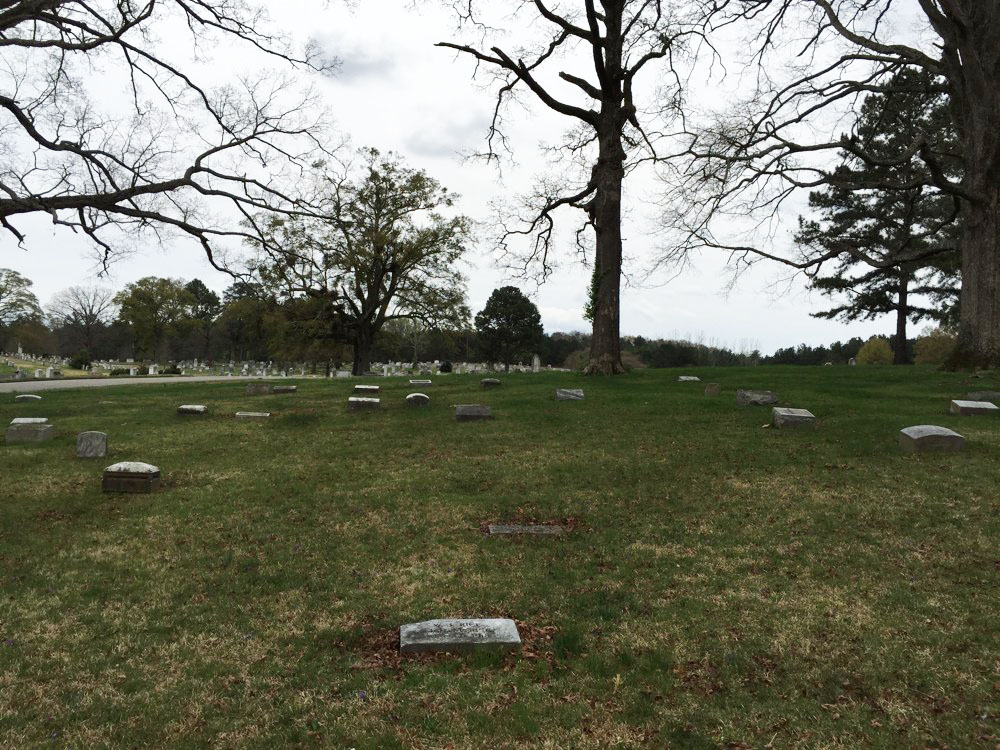
Looking From W.J. Rice's grave back toward the south

Looking from W. J. Rice's grave back to the north
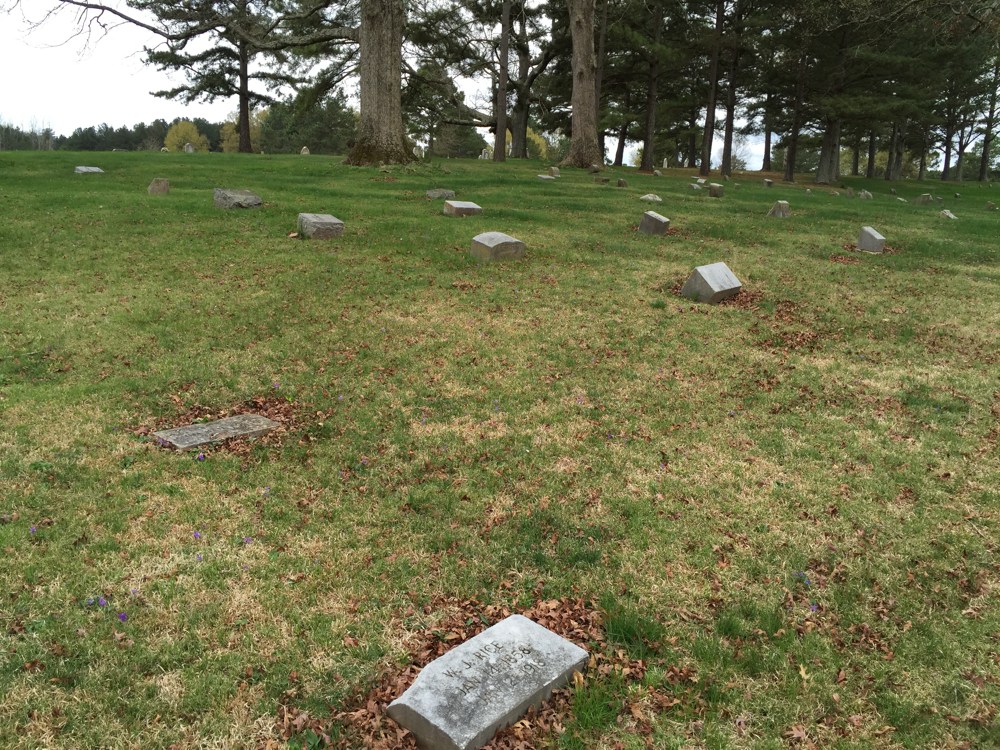
W.J. Rice's grave looking toward the southwest

W. J. Rice
January 14, 1858
January 21, 1918
![]()
Photos Taken 03.26.2015
Webpage produced 03.27.2015
Courtesy of Scott Harp
www.TheRestorationMovement.com
![]()

